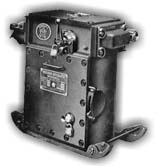



    |
|
|
Submarine Mining  The coal fields of Cape Breton lie close to the coastline, and a large percentage of the field extends under the ocean. As a result, the mines of Cape Breton's east coast, among the most extensive mining operations in the world, face problems that are different from those encountered in other fields.
The coal fields of Cape Breton lie close to the coastline, and a large percentage of the field extends under the ocean. As a result, the mines of Cape Breton's east coast, among the most extensive mining operations in the world, face problems that are different from those encountered in other fields.The biggest problem in undersea mining is the possibility that the sea will break into the workings. Until a certain depth of cover is reached, pillars of a sufficient size to support the sea bottom must be left intact. In Nova Scotia, removal of coal is prohibited by mining laws at a depth of less than 180 feet of solid cover under the sea. The cover line for most Cape Breton workings is 700 feet, and until this level is reached, the width of the rooms is restricted and no pillar extraction is carried out. After this level is reached, the longwall method is usually used for complete removal of the coal as long as 100 feet of solid cover remains for each foot of thickness of the coal removed. An advantage of an underground mine working under land rather than under the ocean is that when the working area is a long distance from the surface entrance, another shaft can be sunk to the working face. Obviously this is not an option with submarine mining and the shaft must continue out under the sea until a distance has been reached that is not economically feasible to mine the coal. How far the mine extends under the sea depends on a number of factors: the nature and thickness of the seam, the character of the roof and floor, the rate of dip, which determines depth, and the amount of coal which can be economically removed from the mine.
|
|
The History |
The Future
Regional Impact | Mining Techniques | The Museum Main | Glossary | Site Map | Text Only |

Created by Virtual Media Productions Ltd., © 1997.
|